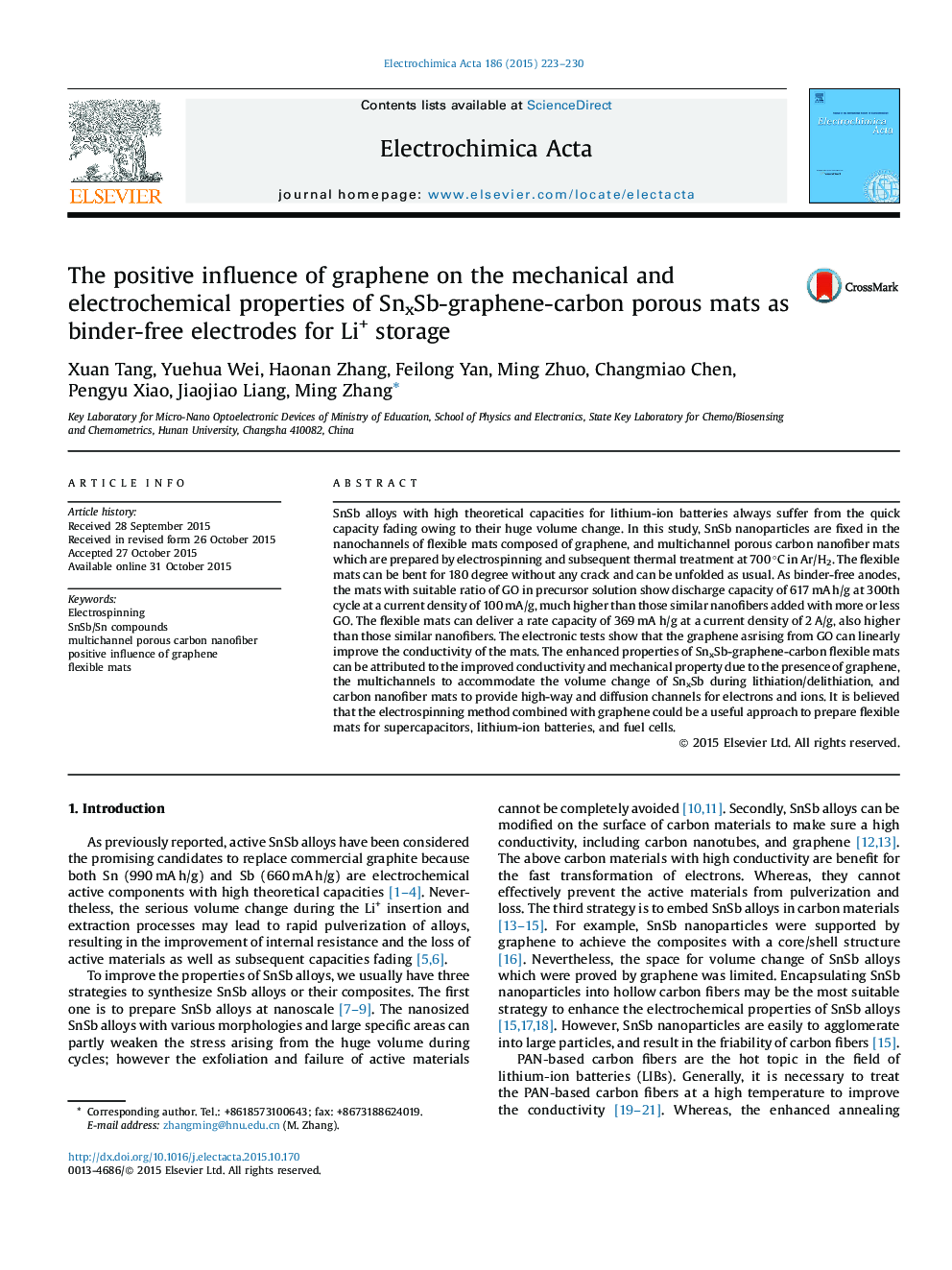| Article ID | Journal | Published Year | Pages | File Type |
|---|---|---|---|---|
| 183561 | Electrochimica Acta | 2015 | 8 Pages |
SnSb alloys with high theoretical capacities for lithium-ion batteries always suffer from the quick capacity fading owing to their huge volume change. In this study, SnSb nanoparticles are fixed in the nanochannels of flexible mats composed of graphene, and multichannel porous carbon nanofiber mats which are prepared by electrospinning and subsequent thermal treatment at 700 °C in Ar/H2. The flexible mats can be bent for 180 degree without any crack and can be unfolded as usual. As binder-free anodes, the mats with suitable ratio of GO in precursor solution show discharge capacity of 617 mA h/g at 300th cycle at a current density of 100 mA/g, much higher than those similar nanofibers added with more or less GO. The flexible mats can deliver a rate capacity of 369 mA h/g at a current density of 2 A/g, also higher than those similar nanofibers. The electronic tests show that the graphene asrising from GO can linearly improve the conductivity of the mats. The enhanced properties of SnxSb-graphene-carbon flexible mats can be attributed to the improved conductivity and mechanical property due to the presence of graphene, the multichannels to accommodate the volume change of SnxSb during lithiation/delithiation, and carbon nanofiber mats to provide high-way and diffusion channels for electrons and ions. It is believed that the electrospinning method combined with graphene could be a useful approach to prepare flexible mats for supercapacitors, lithium-ion batteries, and fuel cells.
